 W
WDanish art is the visual arts produced in Denmark or by Danish artists. It goes back thousands of years with significant artifacts from the 2nd millennium BC, such as the Trundholm sun chariot. For many early periods, it is usually considered as part of the wider Nordic art of Scandinavia. Art from what is today Denmark forms part of the art of the Nordic Bronze Age, and then Norse and Viking art. Danish medieval painting is almost entirely known from church frescos such as those from the 16th-century artist known as the Elmelunde Master.
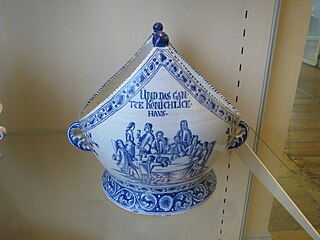 W
WA bishop-bowl is a punch bowl made of faience and shaped in the form of a mitre that was popular in Denmark and Schleswig-Holstein in the eighteenth end nineteenth centuries. The alcoholic drink served from the bowl was known as "bishop".
 W
WFreetown Christiania, also known as Christiania, is an intentional community and commune of about 850 to 1,000 residents, covering 7.7 hectares in the borough of Christianshavn in the Danish capital city of Copenhagen.
 W
WChristianity is a prevalent religion in Denmark; in January 2020, 74.3% of the population of Denmark were members of the Church of Denmark. According to a survey based on a sample 1,114, 25% of Danes believe Jesus is the son of God, and 18% believe he is the saviour of the world. Aside from Lutheranism, there is a small Catholic minority, as well as small Protestant denominations such as the Baptist Union of Denmark and the Reformed Synod of Denmark.
 W
WCirkusrevyen is the biggest revue in Denmark located in Dyrehavsbakken north of Copenhagen. It was founded in 1935 by restaurateur Carl Pehrsson, actors Osvald Helmuth, Oscar Holst and the mucisian Herman Gellin
 W
WConstitution Day is observed in Denmark on 5 June. The day honors the Danish Constitution, as both the first constitution of 1849 and the current constitution of 1953 were signed on this date of their respective years. Denmark is one of only a handful countries in the world to not have an official national day, but Constitution Day is sometimes considered the equivalent of such a day. It is also widely considered to be a day for celebrating Danish democracy.
 W
WDanish cuisine originated from the peasant population's own local produce and was enhanced by cooking techniques developed in the late 19th century and the wider availability of goods during and after the Industrial Revolution. Open sandwiches, known as smørrebrød, which in their basic form are the usual fare for lunch, can be considered a national speciality when prepared and decorated with a variety of fine ingredients. Hot meals are typically prepared with meat or fish. Substantial meat and fish dishes includes flæskesteg and kogt torsk with mustard sauce and trimmings. Ground meats became widespread during the industrial revolution and traditional dishes that are still popular includes frikadeller, karbonader and medisterpølse. Denmark is known for its Carlsberg and Tuborg beers and for its akvavit and bitters, but amongst the Danes themselves imported wine has gained steadily in popularity since the 1960s.
 W
WDanish Academy is an independent organisation founded in 1960 by a circle of Danish intellectuals "to promote Danish esprit and language, especially within the field of literature". It has up to 20 members, currently 18, and is based at Rungstedlund, the former home of author Karen Blixen who was one of the original members. The Academy runs a number of annual literary prizes including most notably its Grand Prize.
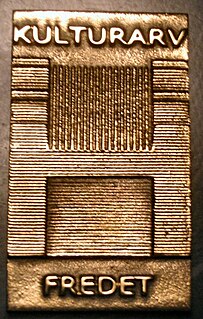 W
WThe Danish Agency for Culture and Palaces is an agency under the aegis of the Danish Ministry of Culture. The agency carries out the cultural policies of the Danish government within the visual and performing arts, music, literature, museums, historical and cultural heritage, broadcasting, libraries and all types of printed and electronic media. It works internationally in all fields, and increased internationalisation of Danish arts and cultural life is a top priority. The Danish Agency for Culture was founded on 1 January 2002 when the Danish Heritage Agency, the Danish Arts Agency and the Danish Agency for Libraries and Media merged. The Danish Agency for Culture and Palaces was founded on 1 January 2016 by a fusion of the Danish Agency for Culture and the Danish agency Styrelsen for Slotte & Kulturejendomme.
 W
WDanish folklore consists of folk tales, legends, songs, music, dancing, popular beliefs and traditions communicated by the inhabitants of towns and villages across the country, often passed on from generation to generation by word of mouth. As in neighbouring countries, interest in folklore grew with an emerging feeling of national consciousness in 19th century Denmark. Researchers travelled across the country collecting innumerable folktales, songs and sayings while observing traditional dress in the various regions. Folklore today is part of the national heritage, represented in particular by national and local traditions, songs, folk dances and literature.
 W
WHouse of Denmark, on 142 Champs-Élysées in Paris, France, is a building which houses exhibition space used for the presentation of Danish culture and commercial interests. The main venue of the house is the Salle du Danemark on the second floor. It also contains a Danish restaurant on the ground floor and office space rented out for international companies.
 W
WThe Danish royal family is the dynastic family of the monarch. All members of the Danish royal family except Queen Margrethe II hold the title of Prince/Princess of Denmark. Dynastic children of the monarch and of the heir apparent are accorded the style of His/Her Royal Highness, while other members of the dynasty are addressed as His/Her Highness. The Queen is styled Her Majesty.
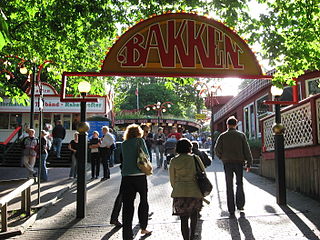 W
WDyrehavsbakken, commonly referred to as Bakken, is an amusement park in Lyngby-Taarbæk Kommune, Denmark, near Klampenborg about 10 km north of central Copenhagen. It opened in 1583 and is the world's oldest operating amusement park.
 W
WErasmus Montanus is a satirical play about academic snobbery in rural Denmark. Written by Ludvig Holberg in 1722, the script was first published in 1723 and performed in 1747.
 W
WHygge is a Danish and Norwegian word for a mood of coziness and comfortable conviviality with feelings of wellness and contentment. As a cultural category with its sets of associated practices hygge has more or less the same meanings in Danish and Norwegian, but the notion is more central in Denmark than in Norway. The emphasis on hygge as a core part of Danish culture is a recent phenomenon, dating to the late 20th century.
 W
WHygge is a Danish and Norwegian word for a mood of coziness and comfortable conviviality with feelings of wellness and contentment. As a cultural category with its sets of associated practices hygge has more or less the same meanings in Danish and Norwegian, but the notion is more central in Denmark than in Norway. The emphasis on hygge as a core part of Danish culture is a recent phenomenon, dating to the late 20th century.
 W
WKulturhavn Kronborg is an area in the harbour of Helsingør dedicated to culture and events, designed to attract residents and visitors. It is a joint initiative by Kronborg Castle, the Danish Maritime Museum, Kulturværftet and Helsingør harbour, and was opened in May 2013.
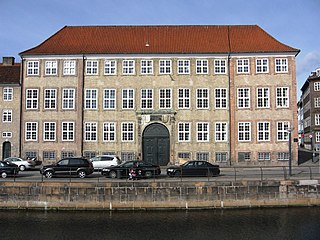 W
WThe Ministry of Culture Denmark is a ministry of the Danish Government, with responsibility for culture, sport and media.
 W
WMudflat hiking is a recreation enjoyed in the Netherlands, northwest Germany and in Denmark. Mudflat hikers are people who, with the aid of a tide table, use a period of low water to walk and wade on the watershed of the mudflats, especially from the Frisian mainland coast to the Frisian islands.
 W
WNålebinding is a fabric creation technique predating both knitting and crochet. Also known in English as "knotless netting," "knotless knitting," or "single needle knitting," the technique is distinct from crochet in that it involves passing the full length of the working thread through each loop, unlike crochet where the work is formed only of loops, never involving the free end. It also differs from knitting in that lengths must be pieced together during the process of nålebinding, rather than a continuous strand of yarn that can easily be pulled out. Archaeological specimens of fabric made by nålebinding can be difficult to distinguish from knitted fabric.
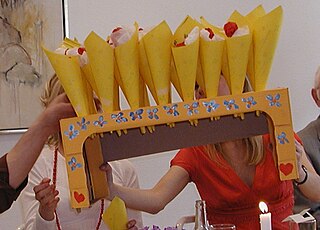 W
WAn occasional song is a novelty song or ballad written and sung for a special occasion. Occasional songs were a cultural tradition throughout Europe and were often important in immigrant communities. In Denmark the tradition of the lejlighedssang has remained strong.
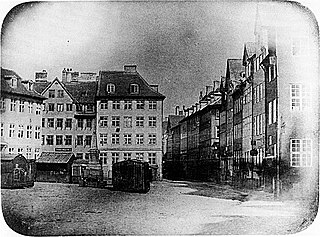 W
WPhotography in Denmark has developed from strong participation and interest in the very beginnings of the art in 1839 to the success of a considerable number of Danes in the world of photography today.
 W
WPleated Christmas hearts are Danish, Norwegian, and north German crafts, commonly used as Christmas ornaments.
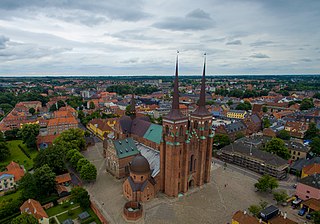 W
WReligion in Denmark is prominently Christianity in the form of the Evangelical Lutheran Church of Denmark, the state religion. Hence, Denmark is not a secular state as there is a clear link between the church and the state with a Minister for Ecclesiastical Affairs. However, pockets of other major faiths can be found among the population. In January 2020, 74.4% of the population of Denmark were registered members of the Church of Denmark, the officially established church, which is Protestant in classification and Lutheran in orientation. This is down 0.6% compared to the year earlier and 1.2% down compared to two years earlier. Despite the high membership figures, only 3% of the population regularly attend Sunday services and only 19% of Danes consider religion to be an important part of their life.
 W
WRisalamande, is a traditional Danish dessert served at Christmas dinner and julefrokost. It is made of rice pudding mixed with whipped cream, sugar, vanilla, and chopped almonds. It is served cold with either warm or cold cherry sauce (kirsebærsovs).
 W
WThe Royal Danish Theatre is both the national Danish performing arts institution and a name used to refer to its old purpose-built venue from 1874 located on Kongens Nytorv in Copenhagen. The theatre was founded in 1748, first serving as the theatre of the king, and then as the theatre of the country. The theatre presents opera, the Royal Danish Ballet, classical music concerts, and drama in several locations.
 W
WThe russefeiring is a traditional celebration for Norwegian high school pupils in their final spring semester. Pupils that take part in the celebrations are known as russ. The russefeiring traditionally starts around 20 April and ends on 17 May, the Norwegian Constitution day. Participants wear coloured overalls. Some form groups that name a bus, car or van. Some celebrate almost continually during this period. Drunkenness and public disturbances are regularly linked to the celebration.
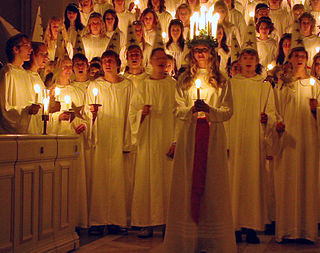 W
WSaint Lucy's Day, also called the Feast of Saint Lucy, is a Christian feast day observed on 13 December. The observance commemorates Lucia of Syracuse, an early-4th-century virgin martyr under the Diocletianic Persecution, who according to legend brought food and aid to Christians hiding in the Roman catacombs, wearing a candle lit wreath on her head to light her way and leave her hands free to carry as much food as possible. Her feast day, which coincided with the shortest day of the year prior to calendar reforms, is widely celebrated as a festival of light. Falling within the Advent season, Saint Lucy's Day is viewed as a precursor of Christmastide, pointing to the arrival of the Light of Christ in the calendar on Christmas Day.
 W
WDanish sculpture as a nationally recognized art form can be traced back to 1752 when Jacques Saly was commissioned to execute a statue of King Frederick V of Denmark on horseback. While Bertel Thorvaldsen was undoubtedly the country's most prominent contributor, many other players have produced fine work, especially in the areas of Neoclassicism, Realism, and in Historicism, the latter resulting from growing consciousness of a national identity. More recently, Danish sculpture has been inspired by European trends, especially those from Paris, including Surrealism and Modernism.
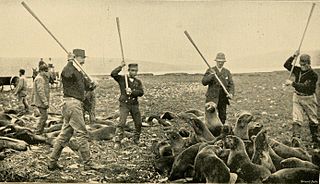 W
WSeal hunting, or sealing, is the personal or commercial hunting of seals. Seal hunting is currently practiced in ten countries: United States, Canada, Namibia, Denmark, Iceland, Norway, Russia, Finland and Sweden. Most of the world's seal hunting takes place in Canada and Greenland.
 W
WSmørrebrød is a traditional Danish open-faced sandwich that usually consists of a piece of buttered rye bread, a dense, dark brown bread, topped with commercial or homemade cold cuts, pieces of meat or fish, cheese or spreads, and garnishes.
 W
WTønder lace is a point-ground type of handmade bobbin lace identified with the Tønder region of Denmark since about 1850, although lace of many types has been made there since as early as 1650. The term is also used more broadly, to refer to any bobbin lace made in Denmark.
 W
WTørskind Gravel Pit is a former gravel pit converted into a sculpture park near Egtved, Vejle, Denmark. The sculptures were created by Robert Jacobsen (1912-1993) and Jean Clareboudt (1944-1997) over five years from 1986 to 1991. The park features works made of steel, granite and timber.